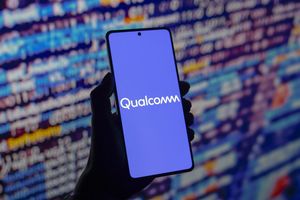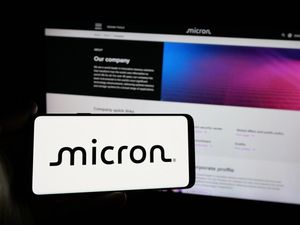
The global semiconductor industry is bracing for an unprecedented surge, driven by the escalating demand for advanced 5G connectivity and sophisticated Artificial Intelligence (AI) capabilities embedded within the next generation of smartphones. As consumers increasingly seek devices capable of seamless high-speed communication and powerful on-device AI processing, chipmakers are at the forefront of a technological revolution. This escalating demand is not merely driving incremental improvements but is fundamentally reshaping innovation trajectories and investment strategies across the sector, with profound implications for everything from processor design to memory solutions.
This confluence of 5G and AI marks a pivotal moment, pushing the boundaries of what is possible in mobile computing. For chipmakers, the challenge and opportunity lie in developing more compact, energy-efficient, and potent chips that can handle the immense data processing requirements of generative AI while simultaneously enabling the ultra-fast, low-latency communication that 5G promises. The ramifications extend beyond traditional chip manufacturing, directly impacting the high-bandwidth memory (HBM) market, which is experiencing explosive growth as it becomes an indispensable component for these cutting-edge AI accelerators.
The Convergence Driving Unprecedented Semiconductor Demand
The convergence of 5G and AI in smartphones has set the semiconductor industry on an accelerated path of innovation, with 2025 serving as a critical year for its unfolding. The smartphone market is projected to see robust growth, particularly in AI-powered devices, with forecasts suggesting a staggering 73% growth in this segment for 2025. By 2028, generative AI smartphones alone are anticipated to reach nearly a billion units worldwide. This explosion is fueled by a consumer appetite for advanced features like enhanced camera capabilities, augmented reality, improved voice assistants, and real-time language translation, all demanding powerful on-device AI processing. Concurrently, global 5G device sales are expected to grow by 13.2% in 2025, riding on significant infrastructure investments.
These trends are compelling chipmakers to innovate at an unprecedented pace, focusing on specialized AI processors such as Neural Processing Units (NPUs), Graphics Processing Units (GPUs), and CPUs specifically optimized for machine learning and generative AI workloads. The focus is on creating chips that offer superior efficiency, real-time processing, and advanced data handling. The rise of edge AI, where data is processed directly on the device rather than in the cloud, is particularly significant for smartphones, necessitating low-power, high-efficiency designs for applications that prioritize immediacy and privacy. The synergy between 5G’s high-speed, low-latency communication and AI applications creates a continuous feedback loop, where each technology enhances the capabilities and potential of the other.
Worldwide semiconductor revenue is forecast to reach $800 billion in 2025, a substantial 17.6% year-over-year increase, and is well on track to exceed $1 trillion by the end of the decade. A significant and growing portion of this expansion is attributed directly to AI technologies, with the AI chip market alone expected to surpass $150 billion in 2025. This demand is not just about more chips, but about more complex and integrated chips. The increasing integration of 5G connectivity, AI-enabled features, and richer multimedia capabilities into smartphones is steadily boosting the semiconductor content per device, leading to higher Average Selling Prices (ASPs) as manufacturers incorporate advanced NPUs, GPUs, and connectivity solutions to support on-device AI.
This shift also highlights the critical role of High-Bandwidth Memory (HBM). The explosive growth of AI and high-performance computing (HPC) mandates ultra-fast data transfer rates and lower energy consumption, which traditional memory architectures struggle to provide. As a result, HBM is increasingly being integrated into GPUs, AI accelerators, data centers, and, crucially, edge AI devices. The HBM market is projected for remarkable growth, expanding from $856.78 million in 2023 to an anticipated $48.9 billion by 2030, with shipments expected to increase by 70% year-over-year in 2025. This makes HBM an indispensable component in the development of next-generation AI-powered 5G smartphones, directly impacting the performance ceiling of these devices.
Chipmakers and Memory Giants: The Winners and Challengers
In this invigorated landscape, several key players are positioned to be significant beneficiaries, while others face intense pressure to adapt. Chipmakers like Qualcomm (NASDAQ: QCOM), MediaTek (TWSE: 2454), and TSMC (NYSE: TSM) are at the forefront, aggressively vying for market share. Qualcomm, a long-standing leader in mobile chipsets, is leveraging its extensive expertise in mobile technology to expand into new markets, notably automotive, while continuing to innovate its Snapdragon platforms with increasingly powerful AI engines and 5G modems. The company's ability to integrate cutting-edge AI acceleration directly into its System-on-Chips (SoCs) for smartphones solidifies its competitive advantage.
Similarly, MediaTek is making strong inroads, with platforms like its Dimensity series incorporating advanced Neural Processing Units (NPUs) specifically designed for generative AI computing at the edge. This focus on enabling faster and safer on-device AI positions MediaTek as a formidable contender, directly challenging Qualcomm in the premium and mid-range smartphone segments. The intensifying competition between these two giants, along with other key players like Apple, Samsung, Huawei, and Google, drives continuous innovation, benefiting consumers with more powerful and efficient devices.
Taiwan Semiconductor Manufacturing Company (TSMC) (NYSE: TSM), as the world's largest dedicated independent semiconductor foundry, stands to gain immensely from this increased demand. As chip designers push for more complex and power-efficient designs, TSMC's cutting-edge fabrication processes, including its advanced 3D chip stacking and innovative packaging technologies like CoWoS, become indispensable. The intense demand for AI and 5G chips ensures TSMC's foundries will operate at high capacity, underpinning the entire industry's growth and profitability. Their technological leadership in producing the most advanced nodes is a critical enabler for the ambitious roadmaps of their fabless clients.
The High-Bandwidth Memory (HBM) market is another clear area of significant winners. Memory giants such as SK Hynix (KRX: 000660), Samsung Electronics (KRX: 005930), and Micron Technology (NASDAQ: MU) are investing heavily in the development and mass production of next-generation HBM technologies, like HBM3E and HBM4. SK Hynix, for instance, has already begun mass production of 12-layer HBM3E, offering substantial performance boosts. Samsung launched mass production of its advanced HBM chips for AI and gaming GPUs in April 2025, while Micron introduced new integrated HBM modules boasting a 50% throughput increase in March 2025. This intense focus on HBM is redirecting capital investment towards DRAM, and specifically HBM, which could lead to supply constraints in NAND production and an anticipated rise in DRAM prices in 2025 due to surging AI demand.
Broader Industry Ripples and Geopolitical Undercurrents
The escalating demand for 5G and AI in smartphones is not an isolated phenomenon but rather a critical accelerant within broader industry trends, fundamentally reshaping the entire semiconductor ecosystem. This event underscores the accelerating shift towards edge AI, where processing moves closer to the data source, directly impacting device architecture and software development. The need for low-latency, high-speed processing for on-device AI applications, such as real-time language processing or advanced image recognition, complements and amplifies the capabilities offered by 5G networks. This synergy is pushing the boundaries of what is possible in mobile computing, driving an intensified race among competitors to deliver superior performance and efficiency.
The ripple effects extend across the supply chain. Beyond the chip designers and foundries, companies involved in semiconductor equipment, materials, and specialized software are also experiencing heightened demand and pressure for innovation. For instance, the push for more advanced packaging technologies, such as those offered by TSMC's CoWoS and Intel's Foveros, signifies a broader industry-wide investment in overcoming the physical limitations of traditional chip design. These advancements are crucial for integrating multiple functionalities into smaller, more powerful packages, essential for the compact form factor of smartphones. The capital expenditure shifts within memory manufacturing, favoring HBM over traditional DRAM and NAND, illustrate a broader reallocation of resources driven by AI's insatiable hunger for bandwidth.
Regulatory bodies and governments are also increasingly taking notice. The strategic importance of semiconductor manufacturing and technological leadership, particularly in AI and 5G, has become a geopolitical hot potato. Nations are implementing policies aimed at bolstering domestic chip production, incentivizing R&D, and securing critical supply chains. The CHIPS Act in the United States and similar initiatives in Europe and Asia reflect a global understanding that semiconductor prowess is synonymous with economic and national security. This event further entrenches the idea that technological self-sufficiency in these critical areas is paramount, potentially leading to increased government subsidies, trade considerations, and intellectual property disputes in the coming years.
Historically, major technological paradigm shifts, such as the PC revolution or the rise of the internet, have always created immense growth opportunities while simultaneously posing existential threats to incumbents unable to adapt. The current convergence of 5G and AI in smartphones echoes these precedents, but with an accelerated pace due to the interconnected nature of global digital economies. The relentless pursuit of miniaturization, power efficiency, and processing power seen now parallels the early days of personal computing, but with a much broader scope of application, ranging from consumer electronics to industrial IoT, all driven by the foundational advancements originating in mobile.
The Road Ahead: Innovation, Specialization, and Strategic Pivots
Looking ahead, the semiconductor industry is poised for continuous, rapid evolution, driven by the sustained demand for 5G and AI. In the short term, we can anticipate an intensified focus on refining current-generation technologies. This includes the further optimization of Neural Processing Units (NPUs) for specific AI workloads, enhancing their efficiency for generative AI tasks on smartphones, and the widespread integration of advanced 5G-Advanced capabilities. Chipmakers will likely prioritize improving power consumption while boosting processing capabilities, a perpetual challenge in mobile technology, to extend battery life and enable more complex on-device AI functions without thermal throttling. The fierce competition among Qualcomm (NASDAQ: QCOM), MediaTek (TWSE: 2454), and others will lead to faster release cycles and more aggressive pricing strategies in the mobile SoC market.
In the long term, the trajectory points towards even deeper integration and specialization. We will likely see the development of highly customized chip architectures that seamlessly blend computing, memory, and communication functionalities into single, ultra-efficient packages. The demand for High-Bandwidth Memory (HBM) will continue its explosive growth, pushing advancements into HBM4 and beyond, with a focus on even higher bandwidths, lower latency, and reduced power consumption, extending its presence not just in data centers but increasingly into premium edge devices. This will necessitate continued, substantial investments from memory manufacturers like SK Hynix (KRX: 000660), Samsung Electronics (KRX: 005930), and Micron Technology (NASDAQ: MU) in R&D and manufacturing capacity.
Strategic pivots will be crucial for companies across the ecosystem. Device manufacturers will need to differentiate their offerings through unique AI experiences powered by these advanced chips, moving beyond hardware specifications to focus on software and service integration. Chipmakers may increasingly collaborate with cloud AI providers to create hybrid on-device/cloud AI solutions, leveraging the strengths of both. New market opportunities will emerge in areas like AI-powered wearables, advanced automotive systems, and industrial IoT, all benefiting from the foundational advancements spurred by smartphone demand. The ability to quickly adapt to evolving AI models and integrate them efficiently into hardware will be a key differentiator.
A Transforming Landscape and What Investors Should Watch
The synergistic demand for 5G connectivity and advanced AI capabilities in smartphones has unequivocally ushered in a new era of innovation and growth for the semiconductor industry. This profound shift is characterized by an intensified focus on developing specialized AI processors and the rapid expansion of the High-Bandwidth Memory (HBM) market. Key takeaways from this event include the unprecedented growth projected for AI-powered smartphones, the critical role of on-device AI in enhancing user experiences, and the resultant surge in demand for high-performance, energy-efficient chips. The semiconductor sector is not merely experiencing an upswing; it is undergoing a foundational transformation driven by the escalating computational demands of our increasingly connected and intelligent devices.
Moving forward, the market will be defined by relentless innovation in chip design and manufacturing. Companies like Qualcomm (NASDAQ: QCOM), MediaTek (TWSE: 2454), and TSMC (NYSE: TSM) are strategically positioned to capitalize on this boom, with their R&D investments in advanced SoCs, NPUs, and cutting-edge fabrication processes proving critical. Similarly, memory powerhouses such as SK Hynix (KRX: 000660), Samsung Electronics (KRX: 005930), and Micron Technology (NASDAQ: MU) are riding the HBM wave, committing significant capital to meet the insatiable demand for high-speed memory crucial for AI workloads. This era signifies a paradigm where hardware and software co-evolve at an accelerated pace, constantly pushing the boundaries of mobile intelligence.
The lasting impact of this convergence will be a more intelligent, interconnected, and responsive digital world, with smartphones serving as the primary interface. Investors should closely monitor several key indicators in the coming months: the pace of 5G-Advanced rollout and adoption, the market penetration rates of generative AI-enabled smartphones, and the supply-demand dynamics within the HBM sector, particularly any signs of price volatility or capacity constraints. Furthermore, watch for strategic partnerships between chipmakers and AI software developers, as well as any regulatory developments that could influence global semiconductor supply chains. The companies that can seamlessly integrate these complex technologies and adapt to rapidly changing consumer expectations will be the ones that thrive in this exciting, high-stakes environment.






